#skyrealms of jorune
Text
#RPGaDay2023 August 11: Weirdest Game I’ve Ever Played.
#RPGaDay2023 for August 11. Things get weird.
Skyrealms of Jorune 3E cover.
I wish I had done this challenge last year. There are a lot of these questions worthy of consideration over the course of a longer period of time. That, and “weird” just means I’m not doing the same thing as everyone else.Steve Jackson’s Toon gets pretty out of hand and off the wall. If you want to be totally bizarre and almost nonsensical, Toon goes there pretty…
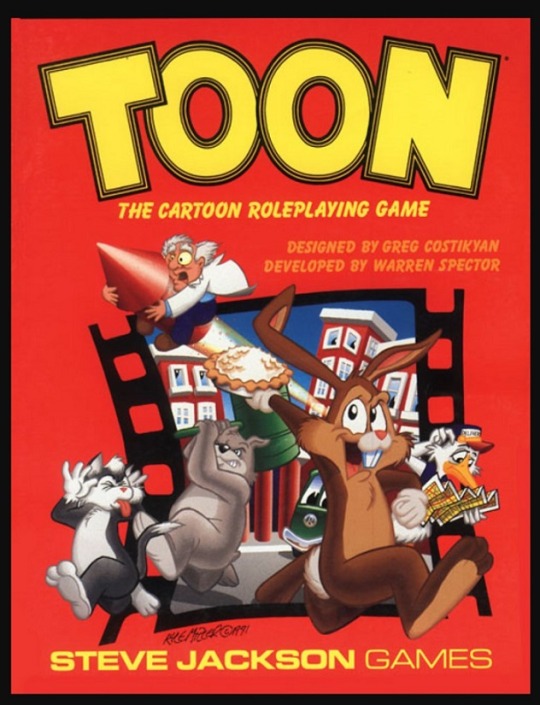
View On WordPress
#RPGaDay2023#rpgblog#rpgblogger#rpgwriter#SkyrealmsofJorune#SteveJacksonGames#strangeTTRPGs#ToonTTRPG#ttrpg#TTRPGblog#TTRPGblogger#ttrpgdesign#ttrpgwriter
1 note
·
View note
Photo



You’re trampling my crops.
What are you?
A farmer, what does it look like?
A run-in with a bronth farmer in SkyRealms of Jorune: Alien Logic
485 notes
·
View notes
Photo
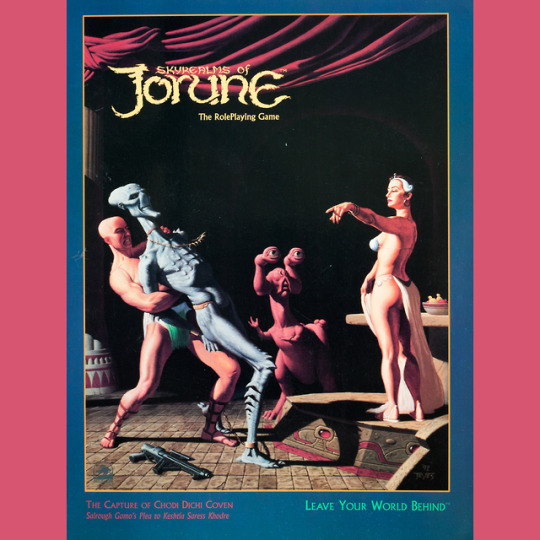




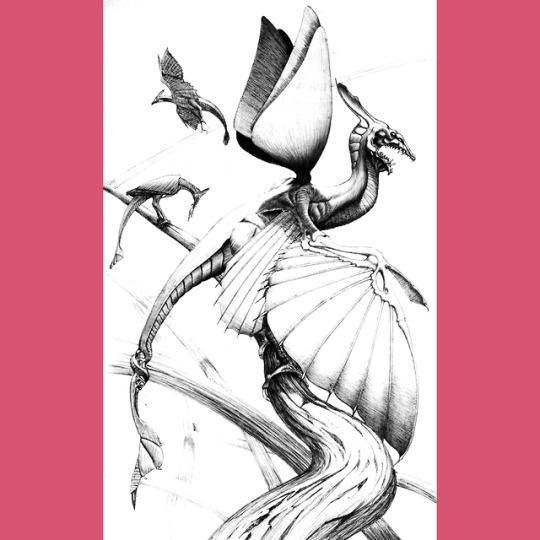



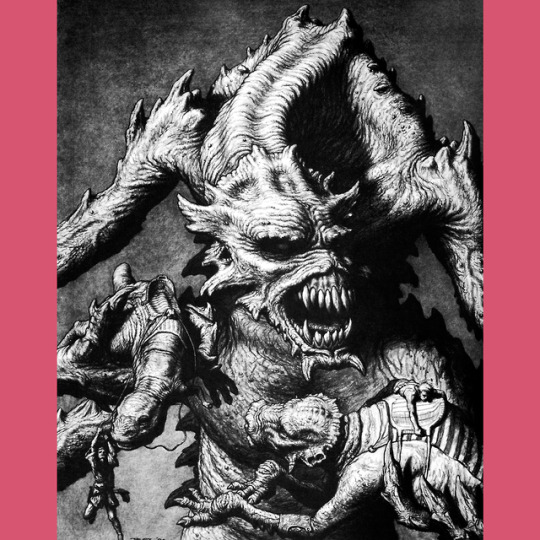
This is the third edition of Skyrealms of Jorune (1992), published by Chessex. The original rules were of a very old school mindset – heavy, concerned with simulation and peppered with a lot of in-universe lingo that made understanding everything harder than it should have been. The Chessex rules were meant to streamline that but it manages to be less comprehensible and feels rushed overall. Also, the hardcore simulation thing wasn’t exactly big business by 1992, and, well, I have heard you could buy these new from Chessex as recently as 2008, so I guess it wasn’t a big seller.
Jorune seems to be a bit cursed, which is a shame, because it is a weird and challenging setting full to brimming with creativity. The core idea is essentially the same as Tekumel – Jorune is the first human interstellar colony, which collapsed due to a cataclysm and culture has only recently scraped its way back up the the medieval level. The execution is its own kind of odd, thanks largely to artist and co-designer Miles Teves, whose work is jaw dropping and makes Andrew Leker’s floating world come alive. A lot of the art here is brand new, too, showcasing eight years of Teves’s honed craft. If nothing else, forget the rules, pick this up (you can find ‘em cheap) to explore the world.
Join us on Patreon!
#RPG#TTRPG#Tabletop RPG#Roleplaying Game#D&D#dungeons & dragons#Miles Teves#Andrew Leker#Skyrealms of Jorune#Jorune#Chessex
95 notes
·
View notes
Text
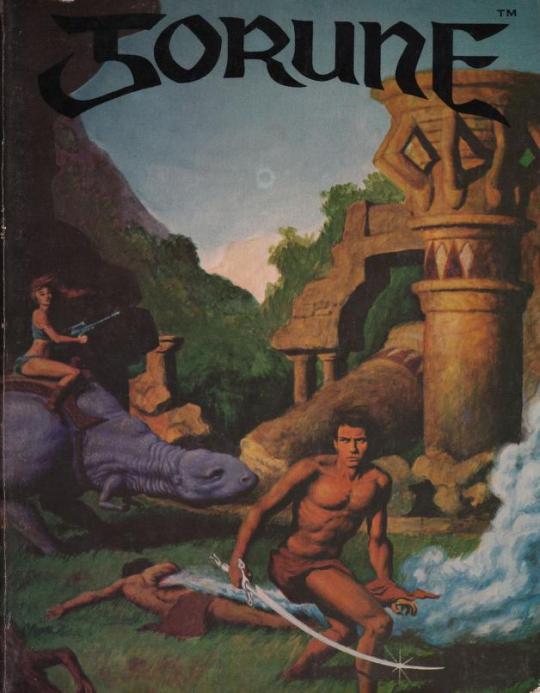

Skyrealms of Jorune
1984
Cover art by Beth Regardz
#Skyrealms of Jorune#fantasy art#pulp fantasy#science fantasy#fantasy#cover art#book cover#cover#Beth Regardz#RPG#dilijáték#1984#1980s#Jorune#sci fi#planet#jungle#sword & planet#weird#retro
8 notes
·
View notes
Photo

Miles Teves-Skyrealms of Jorune
93 notes
·
View notes
Photo

I’m ready to leave my world behind. Are you? Here’s my review of Skyrealms of Jorune: https://matthewjconstantine.com/2018/06/17/tabletop-rpg-review-skyrealms-of-jorune/
#Skyrealms of Jorune#Jorune#Tabletop RPGs#Tabletop Role Playing#Games#Art#Fantasy#Science Fiction#Miles Teves#Andrew Leker
6 notes
·
View notes
Photo

White Wolf magazine #12 ~ White Wolf (October, 1988)
#RPG#White Wolf magazine#White Wolf#Dungeons and Dragons#Call of Cthulhu#Skyrealms of Jorune#Talislanta
24 notes
·
View notes
Photo

The Empire of the Petal Throne, printed first in 1975, was the first real “campaign setting” ever created in the early days of roleplaying games, at least as we would recognize it, e.g., the idea the setting has unique characteristics and history, magic has certain rules, the tech level means a wildly different equipment list...as opposed to just being a platform for campaigns, discovered as the characters explore and move around, which was often the default in most early tabletop games. You can’t think of the first generation of tabletop gamers without seeing the huge influence of Empire of the Petal Throne in nearly everything; in the 70s, at the scale games worked at, this was a big deal.

As for the setting itself, it’s often fascinating to me how divergent thinkers tend to diverge alike. Nearly all “weird and different” tabletop settings (e.g. Talislanta, Skyrealms of Jorune, heck, even Synnibarr, the Uwe Boll of this subgenre) follow the blueprint of Jack Vance’s Dying Earth books, in that it usually is a setting of impossible antiquity that at one point was starfaring but reverted to barbarism, so a feudal society is surrounded by alien artifacts and superscience they barely understand, with ruins of 20,000 years and so on. That’s the world of the Empire of the Petal Throne, an earth colony that reverted to barbarism when it was sucked out of the planet’s orbit 40,000 years ago and into a dimension with vastly different physical laws. It led to impossibly stratified, priest-ruled cultures where social standing had to be factored into everything, more like precolonial India. Artists tend to make it look vaguely like precolonial South America, as their overly busy ornamentation seems to be visual shorthand in the western mind for “culture that is truly alien and wildly divergent.”

The creator of the setting was M.A. R. Barker, a professor of Indian and Middle Eastern studies who was a white Midwesterner who converted to Islam and changed his name to Mohammed Abdul Rashid (before weebs and Japanophilia, the culture nerds tended to obsess over most was the Middle East, India, and Persia, just ask Harold Lamb, John Milius, or even Lovecraft, who gave himself the “Arab name” of Abdul Azhared and wrote “The Dream Quest of Unknown Kadath”). Barker was essentially every single teen dungeon master, myself included, with dozens and dozens of marbled composition books with all kinds of detailed notes on their settings. The interesting part is that as he was a linguist, he created artificial languages for his settings, and with Tolkien, who Barks is often compared to, it’s challenging to discover whether he started setting-first, or created the setting as a vehicle for his constructed languages. The amazing thing is, when he started writing about his setting, there was no tabletop gaming; he first saw it as a vehicle for a novel, then wargaming, then when D&D came into existence, he started running games there that lasted for decades and were published.

Barker ran a famous “Thursday night game” for decades in Minneapolis set in the Empire of the Petal Throne, one of his players was D&D founding father and co-creator Dave Arneson. The fascinating thing about early D&D in these days is how cliquish it was; everyone knew everyone through personal connection. Professor Barker was in the right place at the right time - the midwest wargaming scene in the early 1970s - to befriend the first circle of D&D gamers, impress them with the sheer shocking depth of the worldbuilding he created at a time when that wasn’t anywhere near close to normal, and get a release of a boxed set of his world setting in ‘75, making it the first true game world setting as we know it.

Details in worldbuilding are great but eventually, there’s a point of diminishing returns. M.A.R. Barker reminds me of a documentary I saw called Jiro Dreams of Sushi where the guy who runs one of the most famous sushi restaurants in the world insists octopus be massaged for 45 minutes before serving. All while reading about Barker, you ask one question: does he care a lot and is he detailed, or is this unhealthy compulsion or obsessiveness? The line between being detailed and “caring a lot” vs. truly obsessive behavior is kind of blurred sometimes, like for instance, when you hear that Barker had a collection of over 2,000+ miniatures he personally created for Empire of the Petal Throne (rather like how sometimes the line between collecting and hoarding is vague). I mean, I don’t even think I can answer that because the line between the two is blurred: was Barker a genius who created a towering achievement, maybe the most detailed fantasy world of all time....or was he an obsessive eccentric with an unhealthy fixation, like a slightly less reclusive Henry Darger?

My personal approach to worldbuilding is to start story first and build the world around the story. Don’t create any details you don’t intend to be important or to create a conflict. If it doesn’t come up, it might as well not be there. Story comes first, not setting. If you want the finale of the first adventure to be in a volcano, put a volcano next to the starting town. Only bring up that trolls once invaded the world from another dimension if you intend for Trolls to return and their dismantled gates to reactivate, and so on. If you create a rule that sorcerers lose their powers when they fall in love, have one get in danger of falling in love. If you have a rule that all clones go insane, but cloning doesn’t come up at all, what was the point of that mental energy and effort, anyway? My point is, you can get away with flimsy worldbuilding and good stories, but never the opposite.
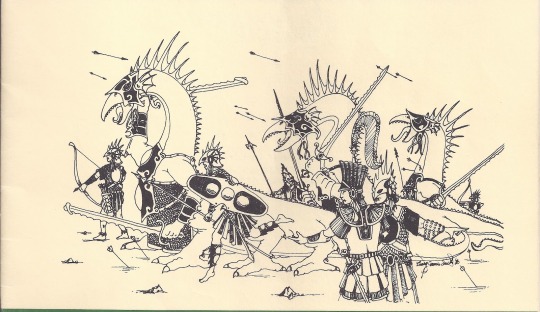
The danger of truly strange settings is that as there’s nothing to mentally compare it to, it all comes off as insane and disconnected - and that’s more a problem with tabletop games than any other, which have to have 6+ people “on the same page.” That’s why games are at their best at genre simulation and it is difficult to do truly unique concepts, e.g. “you’re all superheroes in Marvel Comics.” Someone, I think it was James Rolfe, once pointed out that nobody ever finds it weird or strange that Godzilla has atomic breath, because he kind of looks like a dragon, and breathing fire is a thing dragons do. But when Gamera, another monster, tucks his head and limbs in and starts flying like a pinwheel, it looks crazy and kind of hilarious because that comes from absolutely nowhere.

Here’s one final question to ask about the first true game setting: can you run a game in it? I’ve found that in my case, the answer is no. It’s such a product of the distinctive genius/insane mind of M.A.R. Barker that it’s hard to see how anyone else could do something with it or approach the material. I admire and love Empire of the Petal Throne, but it’s the only game setting I ever got I haven’t used. It’s interesting that D&D never revived Empire of the Petal Throne; I suppose it was too much of a product of a single stubborn vision to be absorbed into the D&D cosmology or multiverse. You will not see the armadillo men with 8 sexes who defecate in public get a listing in the Monster Manual in any future edition.
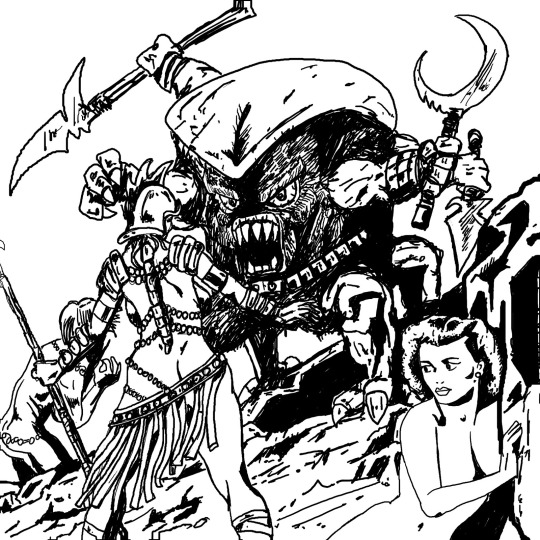
304 notes
·
View notes
Link
Whetstone (ένα ερασιτεχνικό περιοδικό Sword and Sorcery) ● Skyrealms of Jorune (ένας πολύ ευφάνταστος κόσμος) ● θαλάσσια χέλια (20 είδη) ● Τόλκιν (εμφανίσεις του στην τηλεόραση) ● Ψηλά βουνά (η μυστηριακή μαγεία τους) ● δοκιμαστικό εμβόλιο για τον COVID-19 (άσχημα συμπτώματα στο 81% των εθελοντών) ● Σχεδόν 0% πιθανότητα θανάτου από κορονοϊό (για ηλικίες έως 45 χρονών) ● Χωρίς χρήματα (μια μελλοντική κοινωνία) ● WindowSwap (άνοιξε ένα τυχαίο παράθυρο στον κόσμο) ● Jeffrey Catherine Jones (20 παλιά εξώφυλλα βιβλίων επιστημονικής φαντασίας) ● Βατραχομυομαχία (ένα εύθυμο έπος-παρωδία της Ιλιάδας του Ομήρου) ● Το δέος για το παράδοξο της φύσης (βασικό για την επιστημονική σκέψη)

#links#περιοδικά#δωρεάν#βιβλία#φαντασία#παιχνίδια#θάλασσα#χέλια#Τόλκιν#Tolkien#βουνά#μυστήριο#μύθοι#Covid19#χρήματα#κοινωνία#οικονομία#τέχνη#ρετρό#παραμύθια#κόσμος#παρωδίες#έπη#αρχαία Ελλάδα#φύση#επιστήμη
6 notes
·
View notes
Text
A Book or Two This Year, Episode Gobbldigook
You know, if you’re gonna name your RPG “Skyrealms of Jorune”, I don’t think it’s unreasonable for me to have expected to find more about those Skyrealms than, say, four paragraphs in 200 pages.
Seriously, there are two solid pages of gibberish glossary thanks to the “immersive rename everything” impulse to call every damn thing by a fan’tasy n’ame equivalent.
0 notes
Text

Charity Tea Party Marathon 2019 is next weekend, all day on Saturday, November 9 starting at 10am EST!
It’s gonna be a fun time to raise money for Trans Lifeline. And there will be lots of tea. In anticipation of the stream, here’s what we’ll be playing:
Alien Logic, a surreal RPG set on an alien world. Alien Logic was based on a tabletop ruleset from 1984 called SkyRealms of Jorune, where humans and aliens co-exist on a distant planet thousands years after the collapse of human colonies. I haven’t played Alien Logic apart from testing it for the stream, so this will be a fun one to explore together!
Treasure Quest, a puzzle-adventure game starring Terry Farrell (Jadzia Dax on Deep Space Nine) that came with a grand prize of $1 million. Treasure Quest is a terrible game to stream, but I want to play it for a little bit because I want to share the unusual story behind this game.
Enigma, a marble game with over 2000 incredibly challenging levels. It’s a doozy, and fitting the chill stream, we’ll play some of the slow-paced Meditation levels, which are more about patience than puzzles.
Ballistics, the fastest racing game ever made. Ballistics is faster than you can possibly believe, and I’m gonna try to play it without getting sick.
Wrath of the Gods, an FMV adventure through Greek mythology. This is the main event of the day. We’re gonna play through the entire game! Wrath of the Gods is so corny and earnest, and I want to share this goofy thing with as many people as possible.
Koji the Frog, an arcade-style game starring a very good frog.
Roly-Polys Nanakorobi Yaoki! By request, I’ll be playing a bit of this recently unearthed game by Osamu Sato, creator of Eastern Mind and LSD: Dream Emulator. I know there’s some Sato fans on here, so I’ve been waiting to play this one for the first time for the stream.
The Journeyman Project, a utopian time travel adventure. If you haven’t seen this one, you’re in for a treat. The Journeyman Project is a stone cold classic and one of my favorite games, and it seems like a great, upbeat way to end the day.
...and a mystery game! If we hit the donation goal for the stream, I’ll play a mystery educational game that, to my knowledge, hasn’t been made available online yet. What could it be? Don’t you want to donate to help trans lives to find out?!
See you on twitch.tv/obscuritory on November 9!
#alien logic#treasure quest#enigma#ballistics#wrath of the gods#koji the frog#roly-polys#Osamu Sato#Journeyman Project#gaming#streaming#obscuritory#trans lifeline
55 notes
·
View notes
Photo
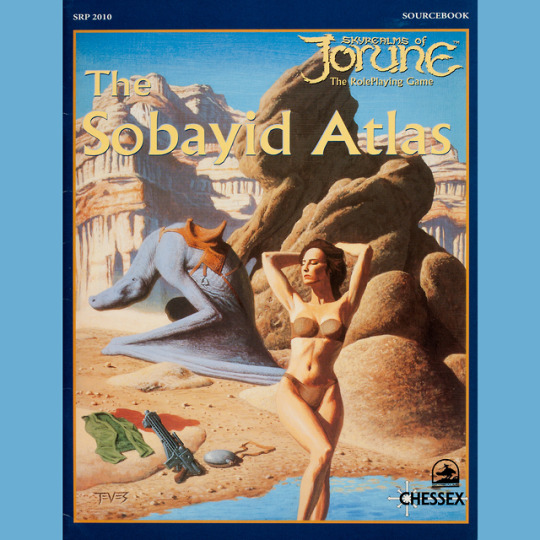



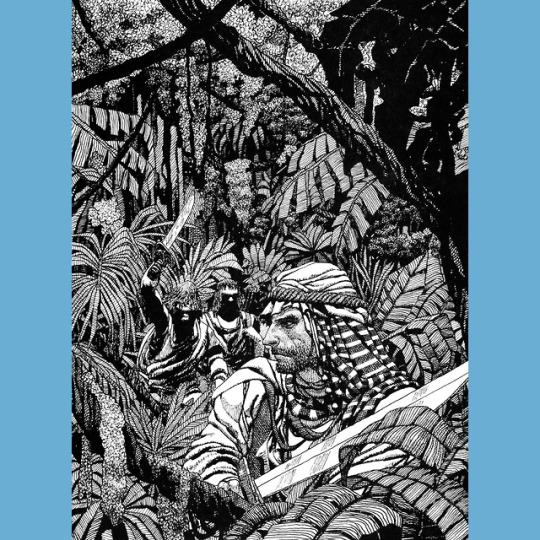
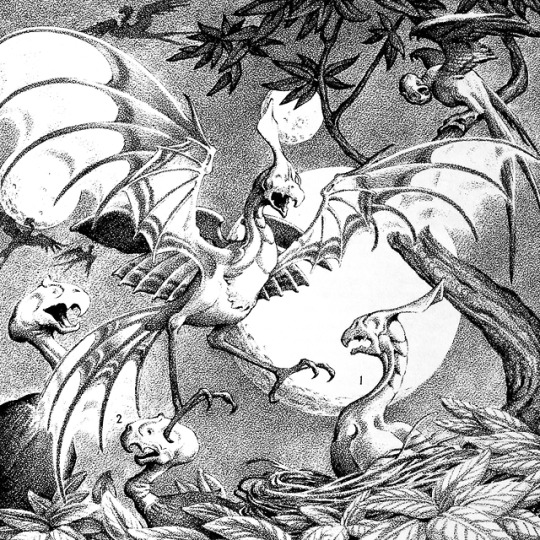

The Sobayid Atlas (1994) is one of several supplements Chessex released in support of the third edition of Skyrealms of Jorune. It is a sourcebook detailing one of Jorune’s wilder provinces, and is intended as an alternative starting location for new players (as opposed to the nearby Ardoth, the fairly civilized city most Jorune products focus on). The back of the book points out that it contains “new dyshas and new knowledge of the muadra and their societies,” which as a beginner makes total sense to me. Wait, no it doesn’t. That is actually a great example of how alienating the language of Jorune products is. So many fantasy words.
There is another major departure here: Mile Teves doesn’t do all the artwork. Which is…strange. It doesn’t quite feel like a Jorune book with him mostly absent. However! Much of the art is done by Janet Aulisio and George Barr. I’ve long adored the enigmatic Aulisio’s art – she did some great work in Call of Cthulhu’s Mansions of Madness, as well as for Earthdawn and World of Darkness, and she’s just as good here. And this might be my favorite selection of Barr’s RPG work.
Join us on Patreon!
#RPG#TTRPG#Tabletop RPG#Roleplaying Game#D&D#dungeons & dragons#Miles Teves#George Barr#Janet Aulisio#Skyrealms of Jorune#Jorune#Chessex
41 notes
·
View notes
Text
Un jour, un jeu : Skyrealms of Jorune!
Un jour, un jeu : Skyrealms of Jorune!
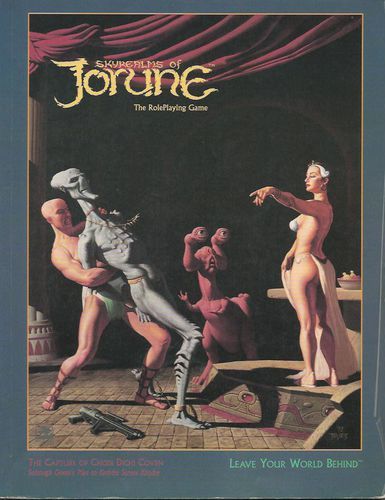
Hello mes p’tites patates volantes! J’ai eu l’occasion de jouer sur deux sessions à cet excellent jeu qu’est Skyrealms of Jorune, et ma foi, la nostalgie étreint mon âme de ludo-sapiens, et me donne l’espoir de parties prochaines! Oui, mais c’est quoi, Skyrealms of Jorune?
Actuellement épuisé, le jeu a connu trois éditions, la dernière étant la plus intéressante. Skyrealms of Jorune, c’est…
View On WordPress
2 notes
·
View notes
Photo
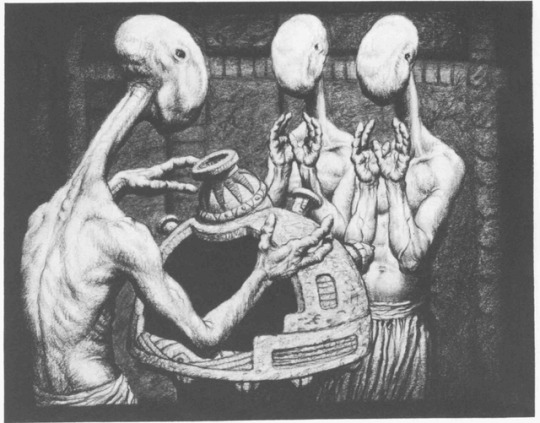
Miles Teves-Skyrealms of Jorune
32 notes
·
View notes

